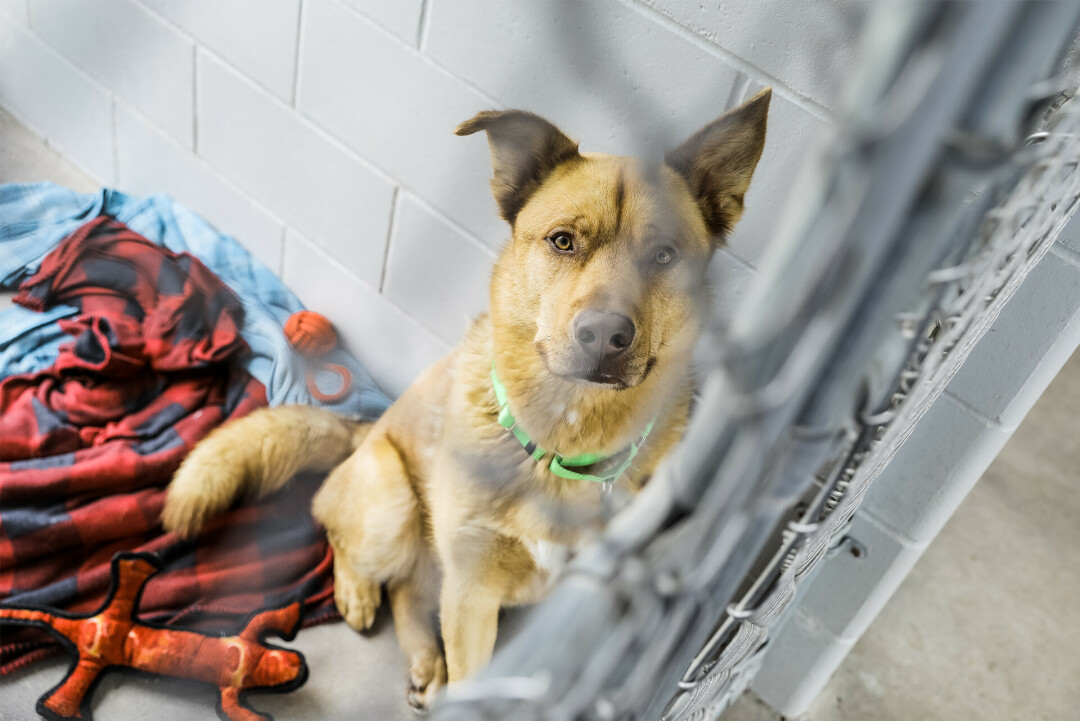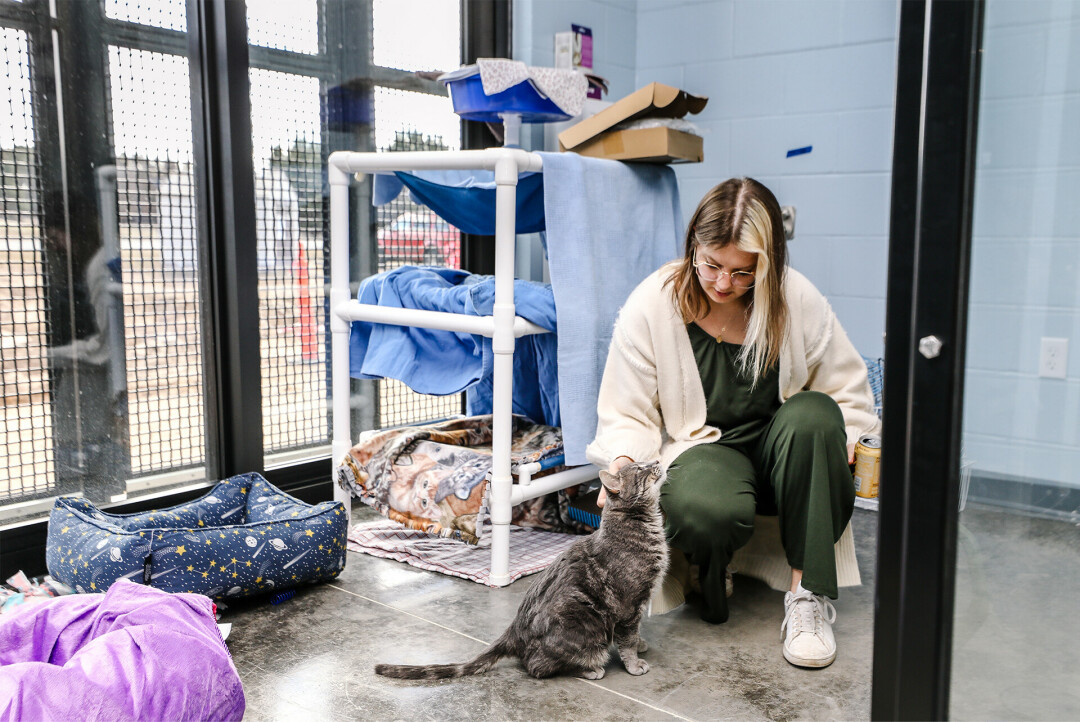Local Animal Shelters Are Full. What Can We Do?
Eau Claire, Chippewa Falls, Dunn County shelters need fosters, volunteers, and adopters
Barbara Arnold, photos by Andrea Paulseth

Chippewa Valley animal shelters are plumb full. Whether due to taking in strays ahead of colder weather; housing instability or pet care costs leading to owners' inability to care for their animals; taking in animals displaced by hurricanes Helene or Milton; or the busy fall season's impact on adoption rates, local shelters are singing the same song: They need more fosters, adopters, and all-around support.
Across the Valley's three main shelters – all of which are No-Kill shelters – there are a total of 242 adoptable animals. The Chippewa Humane Association (CHA) has 64 adoptable cats and dogs; Dunn County Humane Association (DCHA) cares for a total of 152 animals, 88 of those being adoptable cats and dogs; and the Eau Claire Community Humane Association (ECCHA) has 106 animals (mostly cats and dogs). For ECCHA, adding in the number of their animals currently in foster care and cats housed at Mr. Kitty's Cat Cafe, that total grows to about 204 animals.
ECCHA recently accepted "transfer pets" from shelters affected by the recent southeastern hurricanes. A total of 10 dogs and four cats were taken in, though the shelter was full prior to being called on for relief. "We are the only open admission shelter in the area, which means we take in any animal regardless of history, age, or medical status," ECCHA marketing director Addie Erdman said.
CHA and DCHA were unable to accept transfer pets due to being both at full capacity, and the number of local strays coming through their doors.
Across the Valley's three main shelters – all being No-Kill shelters – there are a total of 242 adoptable animals.
In a recent interview with WQOW-TV, Sam Wojcik, CHA executive director, said their shelter is taking in strays daily: “For dogs, we’re almost at capacity. Generally, we have around 23 to 25 dogs in the building. Right now, we have 31. Cats are also reaching capacity. We’re getting in strays every day, dogs and cats.”
DCHA’s executive director Harvey Weidman is experiencing a similar situation. Since the start of October alone, DCHA has taken in 67 cats and nine dogs. The shelter does partner with UW-River Falls and its "Falcon Felines" program – "Every semester, students in the Advanced Canine and Feline Management class take responsibility (of) four to six DCHA cats," Weidman said. "They provide daily care and socialization, and offer open hours for anyone on campus to come and meet the cats. Most of the 'Falcon Felines' cats get adopted by the end of the semester." However, the shelter regularly struggles to find adopters.
“Our first priority is to the pets of Dunn County,” Weidman wrote in an email. “Unfortunately, in our community, there are already too many unhoused, abandoned, and abused pets that need our services, and we’re struggling to find enough adopters for these pets. We wish we could do more for pets impacted by Helene and Milton. Unfortunately, we do not have the space and resources to do so.”

How to help
Adopt, adopt, adopt. Each shelter has a similar application process available on their websites to ensure their animals land healthfully and safely in their forever home.
If adoption is not an option, fostering also helps. At ECCHA, one foster mom took in a pregnant mama cat who, soon after, gave birth to six darling kittens. For an initial check-up with the vet, she brought mama cat and her litter in a cat carrier to ECCHA.
Fostering isn’t just a way to get more available space at the shelter; it also helps staff learn more about each pet, Erdman said in a recent interview with WQOW-TV.
“Maybe we have a dog here and we say, ‘yeah it doesn’t really seem to be good with other dogs. It doesn’t really seem to like men, for example, or doesn’t like this or that,’ ” she shared. “Then you get them into a foster home where their stress levels come down, and they’re completely different dogs.”
CHA’s Wojcik relayed the same in the interview: “If our pets can even go to foster for a little vacation where they’re gone for a couple of hours, it gives the dog or cat a break from the shelter where they can calm down and just kind of reset. Then we learn more about the dog or cat that we can put in their bio.”
DCHA’s Weidman said they are incredibly lucky to have a total of seven area foster homes – the highest number for the local shelter in years – as finding local pet foster parents has proved challenging. “In our foster program, we provide all pet supplies (food, litter, toys, beds, etc.) and all medical care for pets as they live temporarily in a home. ... We typically have no more than two to four pets in foster care at one time.”
Weidman concluded that it takes a special kind of person to devote their life to shelter work: “They sacrifice so much of their personal life in the service of saving the lives of animals."
Donating your time, too, is another way to help local animal shelters. Volunteers largely support the day-to-day and long-term needs of those animals alongside each shelter's staff.
Learn more about the Chippewa Humane Association, 10501 County Hwy. S, Chippewa Falls, at chippewahumane.com • Learn more about the Eau Claire Community Humane Association, 3900 Old Town Hall Road, Eau Claire, at eccha.org • Learn more about the Dunn County Humane Society, 302 Brickyard Road, Menomonie, at dunncountyhumanesociety.org

